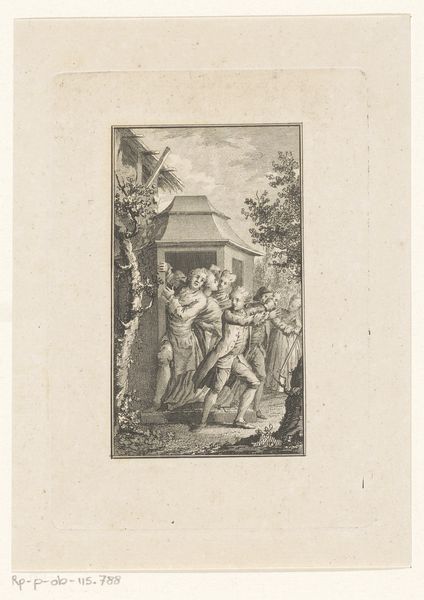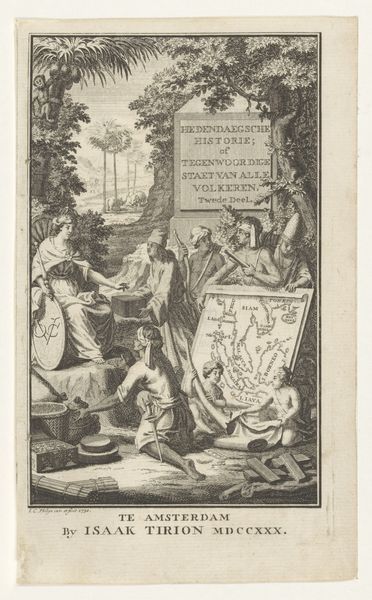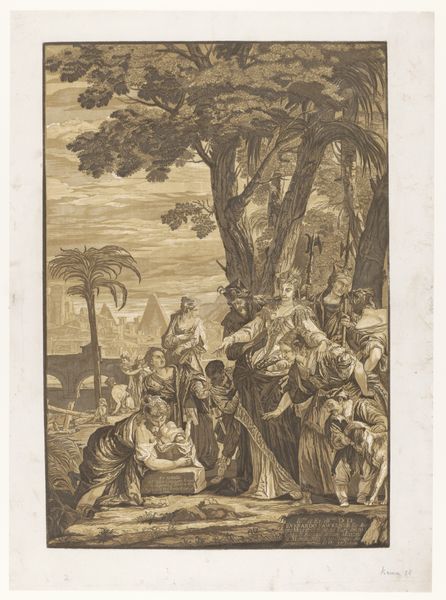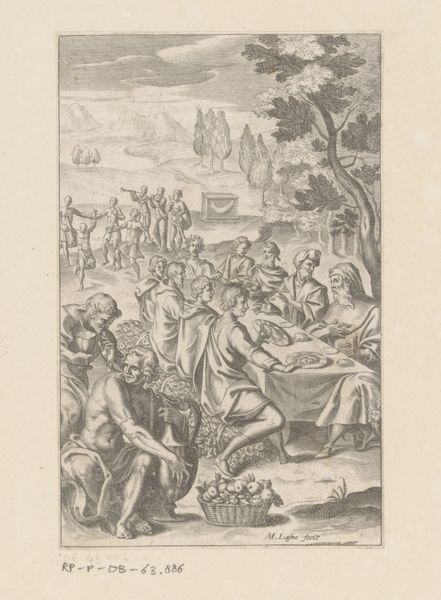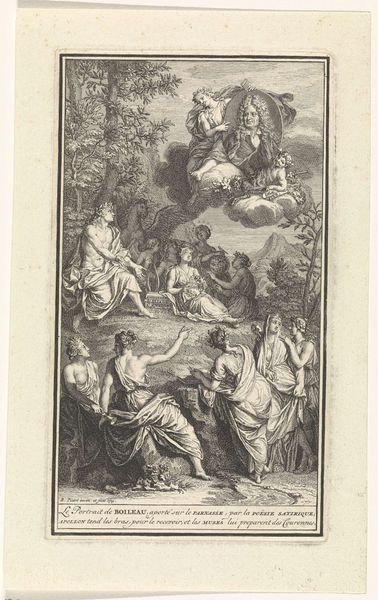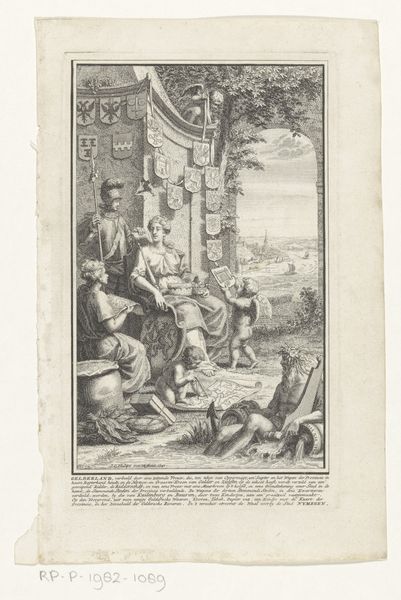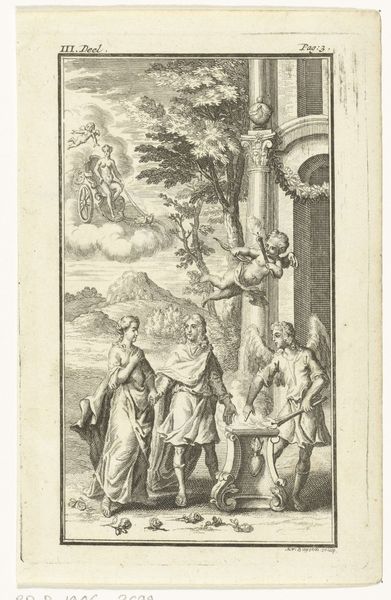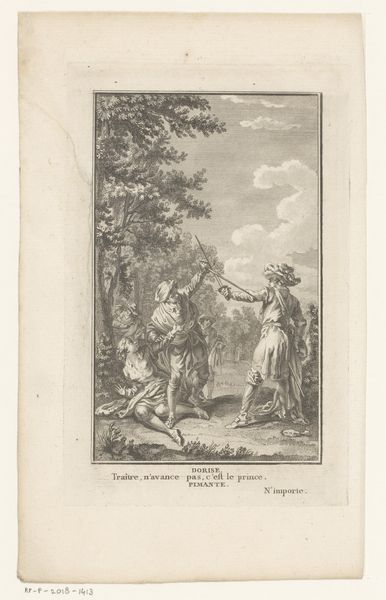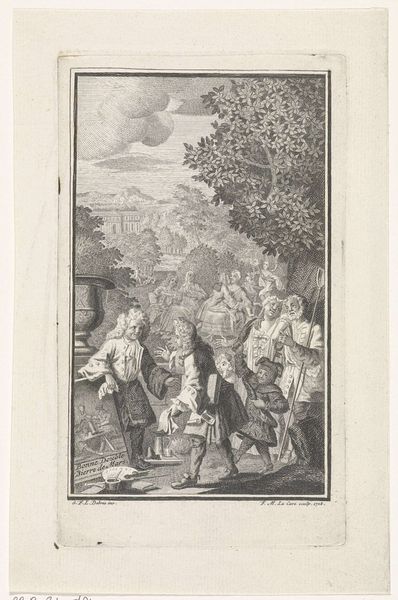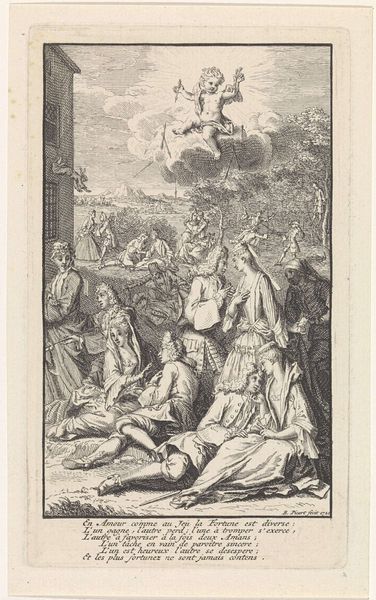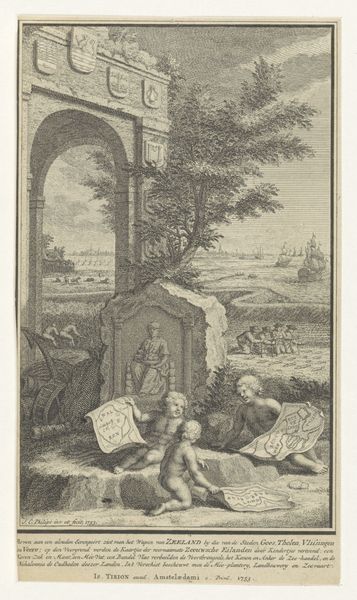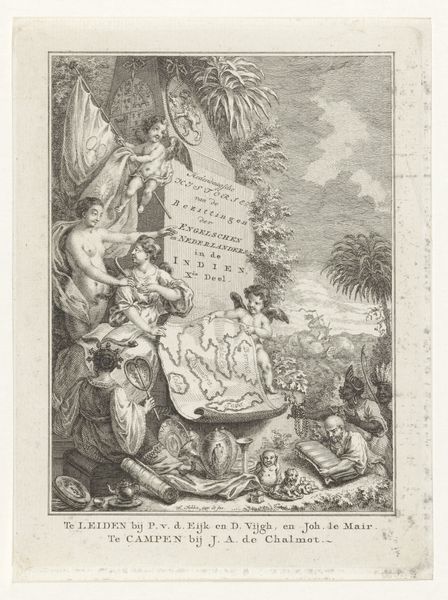
Allegorische voorstelling met Hoop, vrouw met lier en Geloofsijver 1754 - 1755
0:00
0:00
engraving
#
allegory
#
baroque
#
old engraving style
#
history-painting
#
engraving
Dimensions: height 170 mm, width 108 mm
Copyright: Rijks Museum: Open Domain
Curator: The somber mood emanating from this engraving almost speaks of another time. Let's delve into Jan Caspar Philips's Allegorische voorstelling met Hoop, vrouw met lier en Geloofsijver, created around 1754-1755. Editor: Absolutely. Initially, it strikes me as rather stagey. There's a very theatrical, baroque quality in the composition, wouldn't you agree? Notice how the artist plays with textures and light, creating depth, drawing the eye from the figures right through to the hazy background? Curator: Precisely! That depth is very much intended. The symbolism here, while overt, is crucial. The central female figure, ‘Hoop,’ accompanied by her lyre, offers a rather musical, emotional response. While Geloofsijver - ‘Religious Zeal’ supports her, bearing written text of a doctrine. Observe the cherubs presenting the book cover with a scene representing death as triumph over those still trapped in life’s illusion, Editor: Yes, those figures – it’s such a stark reminder that death brings one back to life, out of its imprisonment. Semiotically, it seems designed to lead the viewer towards a recognition of inner hope. Curator: And the setting reinforces this hope. Note how, in contrast to this darker image of physical bodies, above, is the sky and clouds symbolizing higher understanding of afterlife, a space where truth resides beyond the confines of earthly struggle. Editor: It seems less interested in naturalistic representation, and more attuned to generating that potent visual drama typical of the baroque—heightened emotional response over detailed precision. Curator: I think that's accurate, and Philips does a great job employing recognizable motifs that create a deeply rooted emotional understanding based on societal symbolism. He draws from history and allegory to shape this perspective. Editor: Indeed. Examining its construction reveals not just artistic intention but also culturally-informed values and shared expectations in 18th-century Netherlands. Curator: Exploring this work through its intrinsic symbols has been truly interesting! Thanks to Jan Caspar Philips, it's allowed us to reflect on some timeless notions, the hope and perseverance of faith! Editor: Exactly. Thinking about the relationships among all elements, the balance of texture and form, makes clear this work is more complex than it appears.
Comments
No comments
Be the first to comment and join the conversation on the ultimate creative platform.
